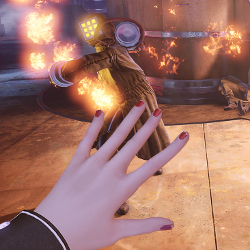Ossuary is on Steam! It’s been a long road getting there, but a game I wrote and designed is finally on the largest online game store.
So far the game’s been selling well compared to its previous performance, but it’s not been anything lifechanging. I’m very thankful to all the fans and journalists who have helped us get to this point.
If you haven’t played the game, pick it up on Steam! If you have played the game, you should have a Steam key waiting wherever you bought it. Please leave a review on the Steam store page saying what you thought!
Ossuary occupies a complicated head space for me. It was developed during a very difficult couple of years in my personal life, and it’s releasing right when I’m struggling the most to support myself. I hope that in the years to come I can look back on this release fondly, but right now I’m not quite sure how I feel.
Discordianism is a major influence on Ossuary, and I’m reminded of its Parable of the Bitter Tea. The Parable of the Bitter Tea teaches us to accept the nature of things. You can work to improve the world and you can see the flaws in it, but it’s harmful to struggle to change that which is already set in stone. I’ll work to be mindful of how I am right now and move toward the future.


